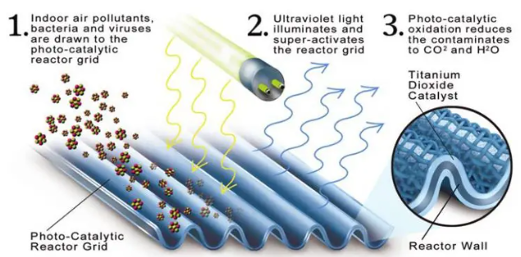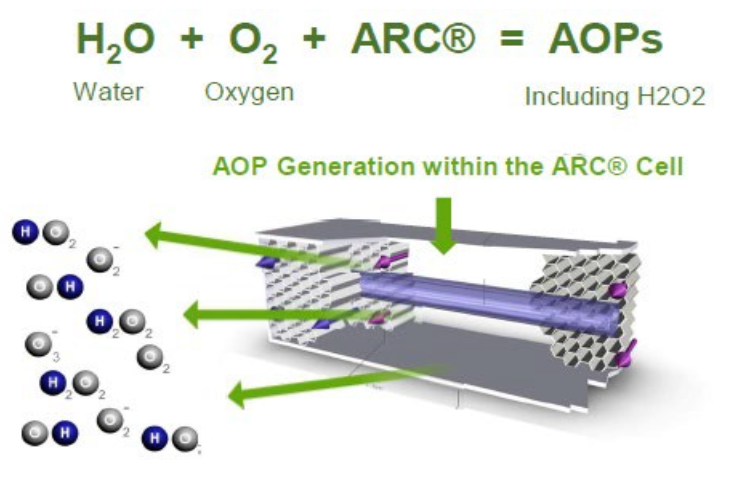How it Works

Traditional PCO Technology Limitations:
Is Passive – Often referred to as a PCO filter because they only benefit what reaches the catalyst. No AOPs or plasma produced, Minimal Microbial and VOC reduction
Only Uses – Single Frequency UV lamp.
Only Provides – Minimal catalytic reaction as Catalysts only consist of course grade Titanium Dioxide.
Old Methods – Typically applied to ineffective mesh material with limited surface versus advanced honeycomb design.
Loses effectiveness over time – No primer on target surface – meaning weaker single catalyst also often flakes/degrades in use.

Photocatalytic Oxidation
Photocatalytic oxidation (PCO) technology uses energy to activate a catalyst, turning moisture into products that continuously clean your space.
- Photo catalytic oxidation effectiveness is determined by both light source quality and the catalyst being used. If not balanced well, these can cause intermittent light waves producing erratic results.
- Currently all alternative catalysts are coated with Titanium Dioxide whereas Greentech uses 4 additional synergistic components. These produce 16 times more hydroxyls on average meaning more effective reach and better sanitised, cleaner air.
- Moreover, traditional technologies reduce the overall production of hydroxyls and are only effective around the unit, requiring more less effective units.